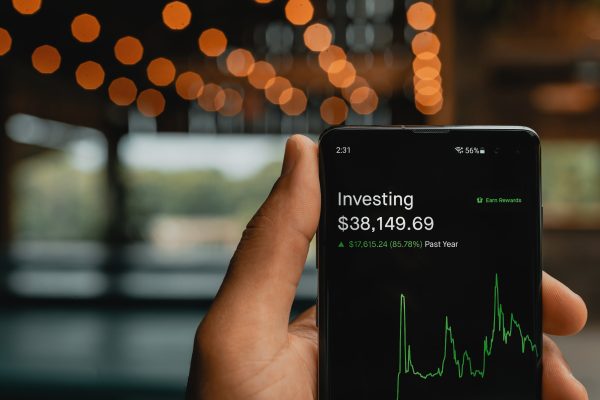
Stock Market Rally: What does it mean for your portfolio?
21 July 2023 6 min read

8 min read
Published:
Updated:

Mohsin Patel
Co-founder
The world is finally taking climate change seriously. Governments and organisations around the world have set ambitious targets to achieve to net-zero carbon dioxide emissions. In order to achieve these targets, we need clean energy sources that are reliable and also reasonably priced. As a result, there is a lot of investment pouring into this space.
In this article, we will break down clean energy, what the investment case is and how you can get exposure to it.
Clean energy is essentially any energy produced that does not release harmful pollutants into the atmosphere or have any other negative environmental impact. Most renewable energy sources such as wind power and solar fall into the category of clean energy. However not all renewable energy can be labelled clean, as some of them have other harmful environmental impacts. Take hydropower: whilst it is a renewable source, the building of dams causes deforestation and other damaging effects to the environment.
There are 4 main reasons why investing in clean energy could be lucrative.
Studies have shown that the world is on track to increase total energy usage by nearly 50% by 2050. So not only, do we need to make existing energy usage cleaner, we also need more capacity. Keep in mind that it’s not just the energy we need. We also need the right infrastructure to process this clean energy as most of our current energy infrastructure is only set up for fossil fuels. Therefore the demand for clean energy and related infrastructure will be enormous.
As such, experts have predicted that trillions of dollars will be invested into the space to achieve these lofty goals. The US alone have published plans to invest $2 trillion into clean energy over the next 4 years. Savvy investors will also start allocating some of their funds into this space to ensure that they don’t miss out.
Governments have long offered subsidies for green initiatives such as solar panels and favourable tax treatments for electric cars. Now we are seeing legislation designed to reduce fossil fuel coverage and push people to move towards cleaner alternatives. For example, the UK government will ban the sale of new petrol and diesel vehicles from 2030 onwards. This has led to many car manufacturers to speed up the production of their green car models. Expect these efforts to intensify as time goes on.
There is also a lot of pressure from activists and concerned citizens that could prove influential. Activists are targeting large institutional investors such as banks, pension funds and universities to divest from fossil fuel investments and instead promote clean energy. This could lead to a lot of inflow in capital.
Consumers are also amending their shopping habits. A 2021 Deloitte study found that 34% of UK respondents had chosen brands that had environmentally sustainable practices. Businesses will have to respond accordingly to ensure they retain relevancy.
With all this said, take care not to get completely carried away by the hype. Whilst the industry definitely has a bright future, not all companies will succeed. Cast your mind back to the ‘Dot Com’ boom of the early 2000s where every internet company was hyped to the moon. Investors threw money at them but when the dust settled, many of the companies ultimately failed.
Lots of companies in the clean energy space will be experimenting with new unproven techniques that are highly risky ventures. Some companies may have excessive valuations that they will never be able to grow into. Ultimately, only a select few will succeed, which is why avoiding the hype and doing your due diligence is key!
But there are clever (and halal) ways to get exposure if you don’t feel confident in doing the research yourself.
There are two main ways a Muslim investor can get exposure to clean energy stocks.
You can look for clean energy stocks yourself. However you are responsible for screening them to determine their halal status and also have to do your due diligence on the company’s prospects. If you are an experienced stock picker and/or understand the clean energy space well, this could be a great option for you. For those that want a bit more support when investing, the following option will suit you more.
For everyone else, the best option would be to invest in clean energy funds. Investing via a fund allows you to benefit from the diversification it offers as well as the fund manager’s expertise. However it is rare that you will find a fund that is fully sharia-compliant.
That’s where the IFG Fund Replicator comes in. We’ve taken the top clean energy funds, filtered out all the haram companies and – voila – you’re left with a clean list of stocks you can choose from. You can check that out here. There’s a range of sorting and filtering you can do to narrow your list down to how many stocks you want to go for. Then you simply go to your online broker account and buy them there.
American company Plug Power is one of the clean energy stocks that features in our fund replicator. Let’s take a look at the company and what its future prospects are.
Their aim is to replace batteries with hydrogen fuel cell systems. Since their inception in 1997, they have largely focused on supplying their tech for forklifts. Prominent clients include the likes of Amazon, Walmart and Nike. Their future strategy is to branch out to heavy-duty vehicles as well as stationary fuel cells to power data centres and distribution hubs.
As of 10 July 2021, their share price was $29.4 a share giving them a market capitalization (total value) of roughly $17 billion dollars. This is a huge increase from the start of 2020, when they were trading at just $3 a share. This would have netted investors a ~10x return on their money in around 18 months. Their share price actually reached a peak of $73 back in January which is over double its current price. So it’s clear to see that this company has overall seen tremendous returns over the past year despite the recent blip.
In terms of revenue, in 2020 they reported gross billings of $337m which was up 45% from the year before. For 2021, management are forecasting gross billings of $475m. Given that 7 years ago they were achieving gross billings of $64m, it is clear to see that the company has a good recent track record of sales growth. However these revenues figures are dwarfed by the current valuation of $17bn. Using the 2021 projected sales figures gives us a forward price to sales ratio of roughly 38 (17bn/475m) which is definitely on the premium side.
Moreover, they are not currently profit making which admittedly isn’t unusual for high growth companies who often have to invest heavily in the early growth stage. In 2019 they made a $50m loss, which soared up to an eyewatering ~$550m loss in 2020. However to put this in context, this was due to various exceptional one-off costs. These costs mainly related to the vesting of warrants. Amazon were granted the option in 2017 through warrants to purchase up to 55 million shares for a purchase price of $1.2 apiece. Amazon obviously took the opportunity to cash in after Plug Power’s share price rocketed. These warrants have now been fully vested so shouldn’t be an issue going forward. Nevertheless investors will still want to see a clear path to profitability.
A reason why investors are willing to give them such a premium valuation is the total addressable market (TAM) that the company potentially has access to. The TAM for its current business, material building has been estimated at around $30 billion, whilst the potential TAM for electric vehicles (EV) is $200 billion. If Plug Power can continue making inroads into the EV market then this could be great news for investors. To further this aim, they have recently partnered with carmaker Renault with the aim of capturing 30% of the fuel cell-powered light commercial vehicle market in Europe.
There are two key risks that investors need to be aware of:
Technology and valuation risk is likely to be a key risk for many companies in the clean energy space. This is because the industry has exploded in the past year in response to unprecedented levels of interest from investors. However the technologies used are still in an early phase of development and mass adoption and so revenues are still catching up. So you really need to make sure you take this into account and invest accordingly. If Plug Power can address both of these issues then they could prove to be a great investment.
If you are concerned about valuation, you could adopt the dollar-cost averaging approach. This is where you invest a certain amount at set intervals regardless of the most recent price. Buying regularly will naturally capture any spikes or dips in price, resulting in a smoothed out average purchase price. This strategy takes emotion out of the decision making process and saves you from worrying about trying to time the market.
And remember, no investment comes without its risks. The key is in understanding those risks and having a diversified approach so that the companies who get it right reward you, and any who fail don’t cause you serious loss.
So there we have it. Clean energy is set to be one of the major investing themes of the upcoming decades.
If you are interested in signing up to the IFG Fund Replicator where you can get access to a pre-vetted list of clean energy stocks, check it out here. It’s an annual subscription which gets you access to various different flavours of investing. Clean energy is the second, the first was UK small cap companies. And there are more to follow!

21 July 2023 6 min read

15 February 2023 7 min read

10 January 2023 11 min read